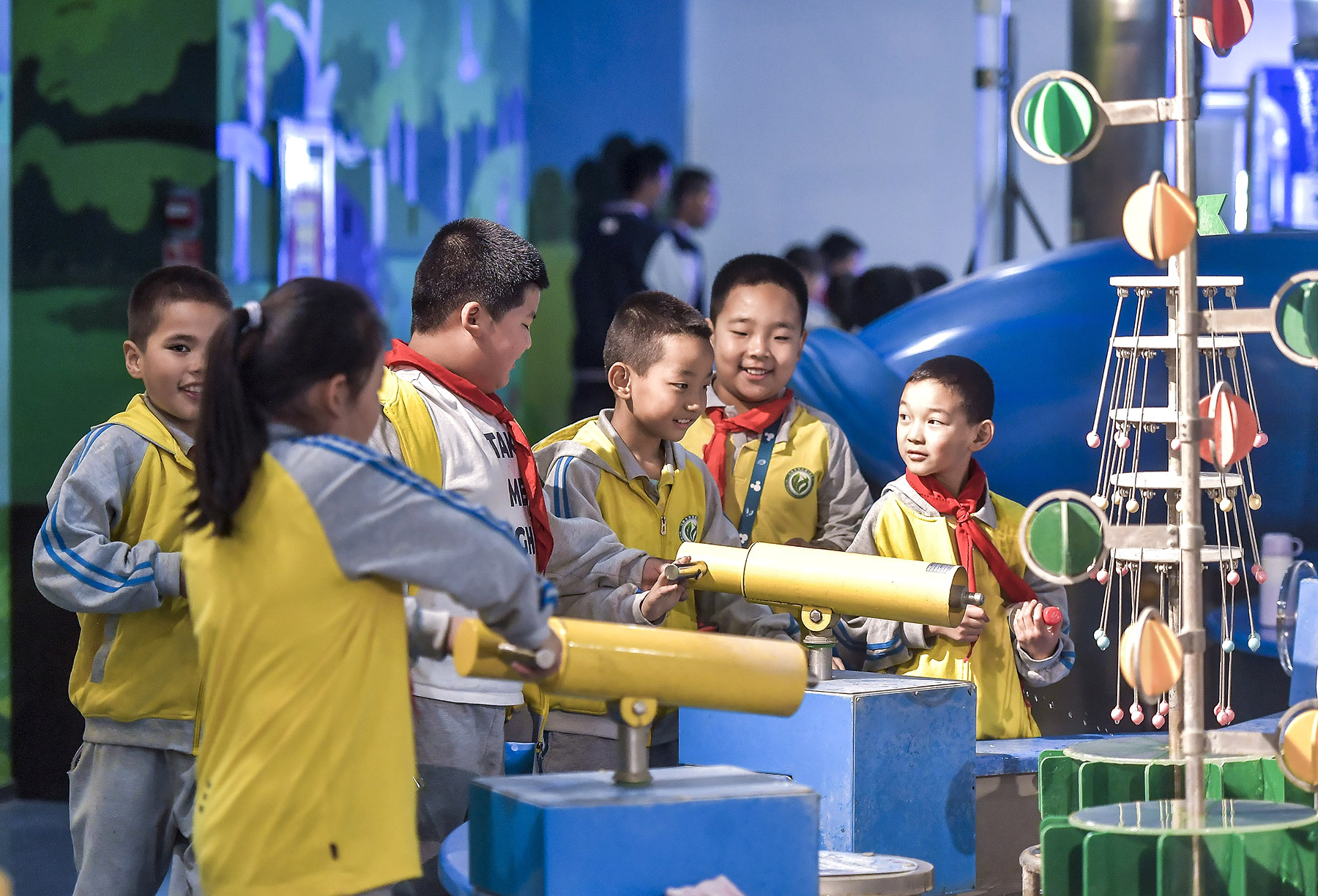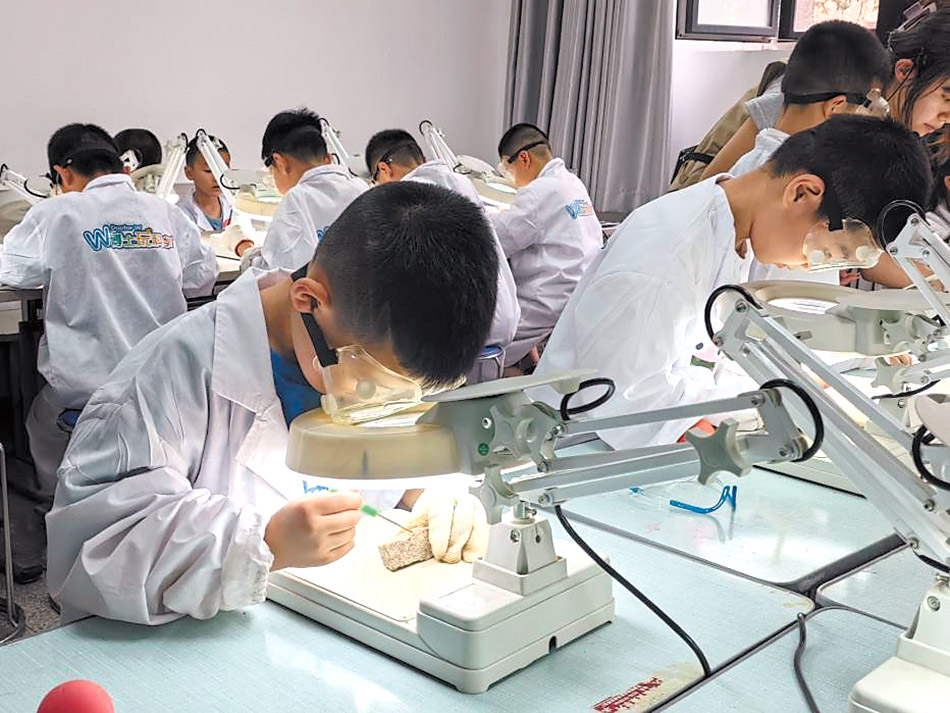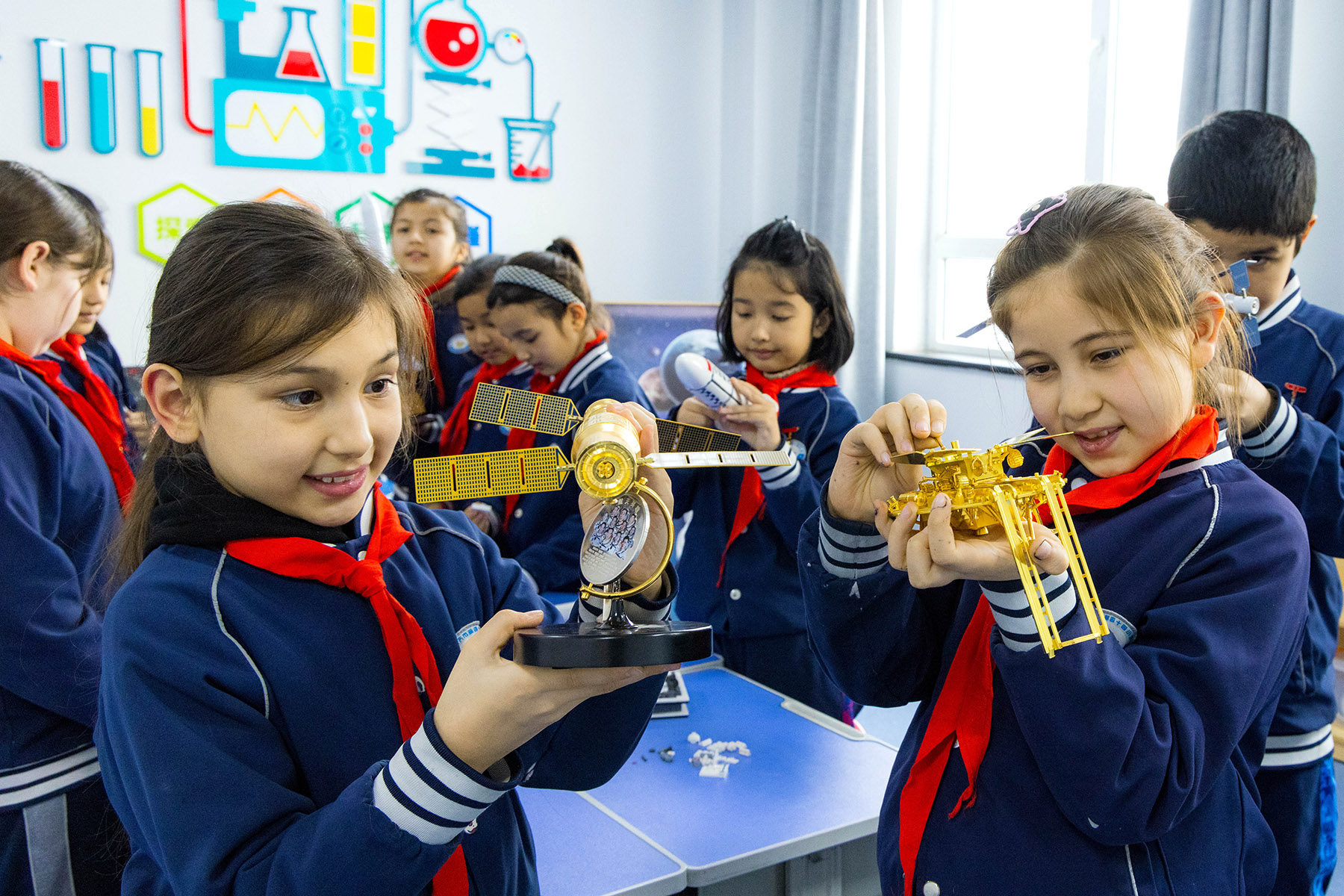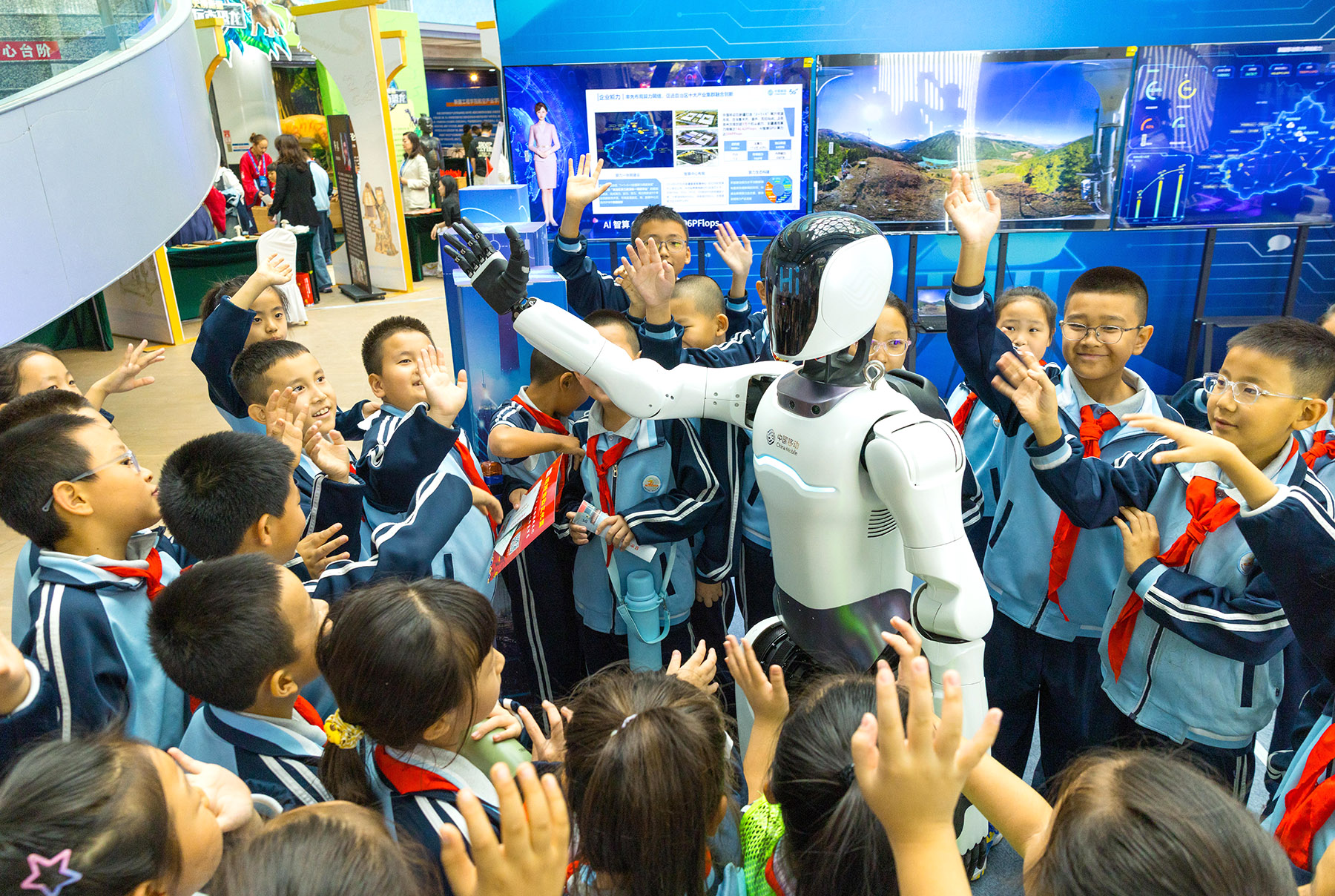China holds first national popularization month dedicated to scientific endeavor

Science literacy is an important tool for any nation to invest in, shaping how future generations not only understand the world, but also how they build it.
Western China's Xinjiang Uygur autonomous region, in particular, is investing heavily in making science education more accessible for young people by fostering handson learning, critical thinking, curiosity and creativity.
There are 66 museums in Xinjiang, according to analytics platform Poi Data, with several more under construction.
September was designated as China's first-ever National Science Popularization Month, and a particular focus of the initiative is to bridge regional gaps in education.
READ MORE: Major educational plans announced
At the Xinjiang Geology and Minerals Museum in the regional capital Urumqi, students learn about the magic of the materials that make up the Earth and the secrets of the stars in the sky. During one public lecture, a young participant scrawls in her notebook: "Mars is red. Jupiter is the big brother."
At the Xinjiang Natural Museum, specimens of animals, plants, bones, bird eggs and soils are gazed at by school groups. During experiment activities, children don white lab coats and goggles, and take on the role of fossil restoration specialists.
At the Xinjiang Science and Technology Museum, young visitors are immersed in simulations of earthquakes, fire evacuation and deep-sea exploration, learning hands-on about science and safety.
"Combining science communication with children's education is not just about conveying knowledge, it's about helping children understand the nature of life, and more importantly, about cultivating scientific thinking and spirit," said Wang Huwen, director of the Xinjiang Natural Museum.

Xie Shuyan, Party secretary of the Xinjiang Science and Technology Museum, is excited about scientific outreach in the region, but cautioned that there is still an uphill battle ahead.
"The advancement of science outreach in Xinjiang still faces difficulties, especially due to the region's vast territory and the great distances between counties and administrative areas," said Xie. "We need to develop a multilayered museum system that can serve the entire region."
On Aug 15, the China Science and Technology Museum and the Kashgar prefecture government signed a framework agreement in Shufu county to jointly build the Southern Xinjiang Science and Culture Complex. A series of science outreach activities have since been launched.
The complex is part of a broader initiative to improve science literacy in southern Xinjiang through interactive exhibits, STEM education and regional innovation showcases.
At the construction site of the complex, a striking building design featuring pomegranate petals stands out, symbolizing both nature and the region's cultural diversity and unity. Each of the five petals represents a distinct exhibition hall.
Also in August, the Shufu County Science and Technology Museum opened.
Keribnur Yusup, a recent graduate in geospatial science from Xinjiang University, became the museum's first guide.
As a native of Shufu county, she now explains the scientific principles behind 60 exhibits to visitors.

Another August opening in Kashgar, the Kashi Science Center, funded by Shenzhen in Guangdong province, was built with a total investment of 80 million yuan ($11.23 million). It spans 11,800 square meters, including 7,500 sq m of exhibition space. Open to the public free of charge, the museum has a daily capacity of 3,000 visitors and has received more than 300,000 visits so far.
"A science museum should serve the purpose of science communication," said Wang Peng, director of the Kashi Science Center. "A space suit in an office is useless. But in a museum, it might inspire a child to become a scientist someday. That alone makes the museum worthwhile."
The five-story museum includes themed halls such as the "Miracles of the Oasis" and "Secrets of Science". Interactive exhibits allow students to experience scientific principles firsthand, such as how sound waves are transmitted or how leverage works.
"By connecting scientific principles with textbook knowledge through hands-on experiences, students grasp concepts more firmly," Wang said.
The museum has partnered with more than 66 schools to serve as a "second classroom" to supplement school education and enhance science teaching.
The China Science and Technology Museum in Beijing has donated a "digital museum assistant" to the Kashi Science Center. The virtual guide was generated by staff member Gulnur Memet and offers interactive responses to visitors through a mobile app, providing real-time information on exhibits, scientific principles and directions.
"When we first opened, few people knew what a science museum was," Wang said. "But now, the museum has become a science education landmark for Kashgar. The city is no longer just known for its ancient town."
Halila Abdulla, a student from Kashgar's No 11 Primary School, said the scientific principles behind the exhibits were eye-opening. "Each visit increases my knowledge and sparks my curiosity. I want to learn more and someday contribute to scientific innovation," she said.

Given Xinjiang's vast territory, science museums are expected to play an increasingly important role in outreach. The museum has extended its own reach by organizing science activities in remote areas such as Shache county, Awat township and Seman township.
Wang said that while strong government support has aided construction efforts, a shortage of trained professionals remains a pressing issue.
Volunteer teams are another crucial component of science museum development. The Xinjiang Science and Technology Museum is currently building the "Snow Lotus" science volunteer team, aiming to train 10,000 female volunteers over the next three years to expand their participation in science outreach.
Fu Lei, an associate research fellow at the museum, said, "So far, we have held 23 training sessions with a total of 1,809 participants."
Jiao Yanan, director of the Tianjin Road residential community in Urumqi's Xinshi district, is one such volunteer. Earlier this year, her community joined the launch of the "Snow Lotus" initiative and began recruiting local science volunteers to serve grassroots education needs.
"With support from the Xinjiang Science and Technology Museum, we've established a community science center and offer weekly science sessions for children during the summer holidays," Jiao said.
She said some parents in the neighborhood struggled to take their children to visit the main museum due to logistical challenges. "Now, kids in our community can conveniently access science learning right where they live. Our science center acts as a neighborhood museum that benefits not only families but also kindergartens across the district," she said.
Fu said: "Once trained, our volunteers return to their communities to give lectures and share what they've learned. Those who attend may pass it on to their families. Xinjiang is vast and we may not be able to track every individual influenced by our work, but science popularization grows layer by layer, just like that."
Liu Zixuan contributed to this story.
Contact the writers at yandongjie@chinadaily.com.cn


